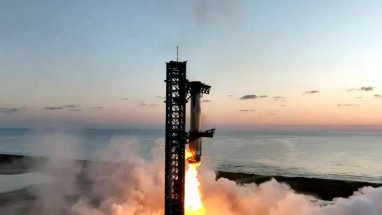
Elon Musk's SpaceX has achieved a major breakthrough in developing reusable space systems. For the first time in history, the booster stage of the Starship Super Heavy rocket has made a controlled return to the launch pad after completing its mission, the BBC reports.
Unlike traditional booster stages, which typically fall into the ocean, the Super Heavy booster was equipped with a special engine for controlled descent. This allowed it to return to the launch site and be “caught” by the launch trusses using special grippers.
This fifth Starship test follows a successful test in June, when the ship splashed down for the first time in the Indian Ocean. With 33 engines, the Starship booster is the most powerful in existence, with a thrust of 74 meganewtons, significantly exceeding the capabilities of NASA's SLS rocket.
The main goal of SpaceX engineers is to create a fully reusable rocket system, similar to an airplane, which will significantly reduce the cost of spaceflight. This technology is critical to Elon Musk's ambitious plans to colonize Mars and the development of the Starlink project to provide global internet coverage.
Starship also plays a key role in NASA's Artemis program, which aims to return humans to the moon. It is planned to be used as a lunar lander and a means of returning astronauts to lunar orbit.
